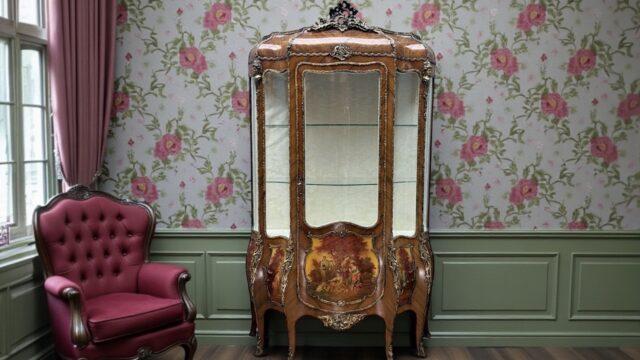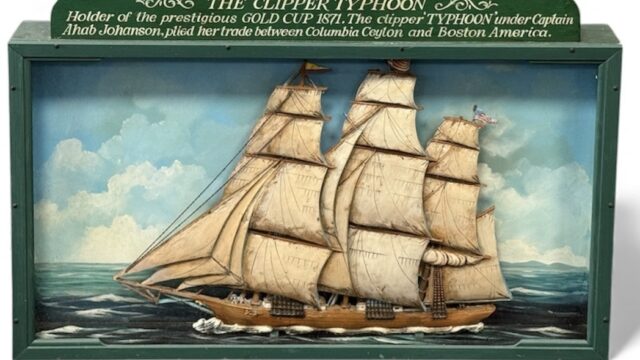Ray Howard-Jones
Visionary Artist of the Wild Pembrokeshire Coast
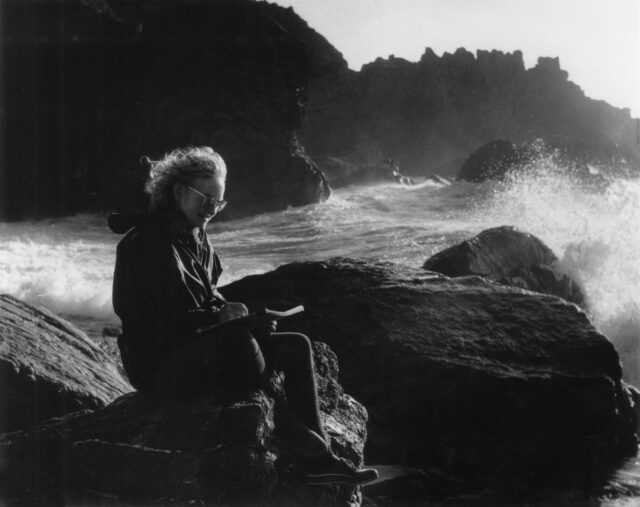
Ray Howard-Jones (1903-1996), one of Wales's most enigmatic artists, is particularly renowned for her paintings of South Wales in the Second World War, for deeply spiritual watercolours and gouaches of the wild Pembrokeshire coast and for outstanding mosaics in the Welsh and Scottish capital cities. A remarkable, vivid and unconventional personality, she was a distinctive presence in the Welsh art world.
I knew Ray in her last decade while working for the museum service in Pembrokeshire in the latter half of the 1980s. I used to visit her on the coast at Marloes where she spent several months of the year living in a caravan. On four occasions I drove her, in her own vehicle, back to her home in London. Much later, some time after Ray had died, I became interested in researching and writing about her life and work. I came to appreciate what an exceptional artist she was. In 2023 Bird Eye Books, an imprint of Graffeg, published my in-depth biography, Ray Howard-Jones: My Hand is the Voice of The Sea. This is illustrated with 250 images, many of them specially photographed.
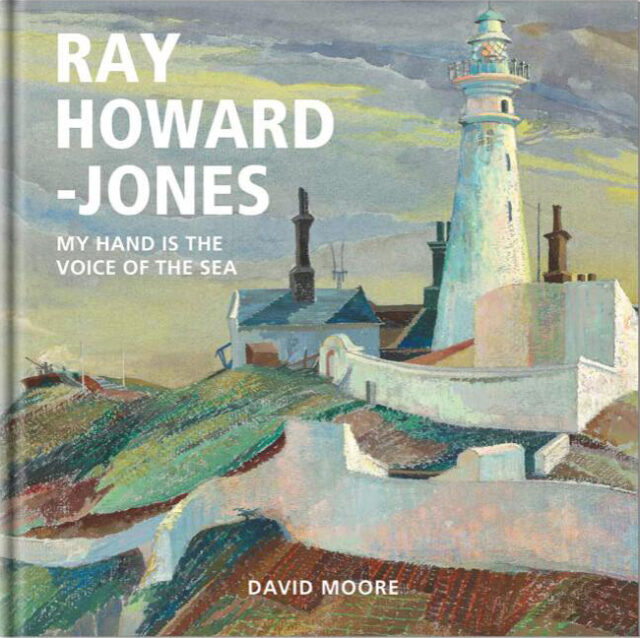
Ray was born in 1903, christened Rose Mary Howard-Jones, and brought up by her prosperous grandfather and guardians in Penarth. She flourished at the progressive London Garden School and, in the early 1920s, at the Slade School of Fine Art, where her tutors included Henry Tonks and Philip Wilson Steer. Afflicted by non-pulmonary tuberculosis, she endured dangerous operations and a long period of convalescence. Her career as a professional artist was not revived until 1935, when, for professional reasons, she adopted the name Ray. She worked as an illustrator at the National Museum of Wales in Cardiff in the 1930s where she befriended archaeologists including William F. Grimes who, obligingly, posed for a life study as did his family. During this period, too, she became artistic director of the East Moors Players in a deprived area of Splott.
Ray made a significant contribution to recording the impact of the Second World War in south Wales. The War Artists' Advisory Committee acquired many of her paintings, including several of preparations of merchant shipping for D-day, and it commissioned her to record the heavily fortified Bristol Channel islands of Flat Holm and Steep Holm. At Amgueddfa Cymru are sketchbook drawings of gun emplacements, military activities with boats and personnel on these islands. A significant wartime gouache, Western Approaches, depicting the lighthouse and a gun emplacement on Flat Holm, was presented to the museum by the Contemporary Art Society for Wales. After the war, in need of respite, Ray was awarded a place, in 1946, at the post-graduate art school at Hospitalfield in Arbroath to develop her work with the warden James Cowie.
In the late 1940s Ray settled in London and met Raymond Moore, a mature graduate from the Royal College of Art, with whom she would live for two decades. Theirs was a mutually supportive creative relationship and they mostly lived and worked in a Victorian house in Hammersmith. During their time together Raymond developed from a painter into a distinguished photographer. Through the 1950s they regularly spent summers on the Pembrokeshire island of Skomer followed, in the 1960s, by seasons on the nearby mainland coast. At this time Ray had five successful and influential solo exhibitions at the Leicester Galleries in London. She also designed two major mosaics in Cardiff and Edinburgh. The former, An Eye for the People, was a three-storey work on the old Western Mail building, sadly demolished in 2008 just as the Twentieth Century Society was about to list it as one of the finest post-war murals in Britain. The Edinburgh mosaic survives, a striking altarpiece in the parish church of Marchmont St Giles. Ray split with Moore in 1970 and continued to visit Marloes in Pembrokeshire until she was quite elderly. She became increasingly celebrated in Wales with major publicly-funded touring exhibitions.
Key concerns of the artist were impressionistic, romantic and deeply spiritual studies of the Pembrokeshire coast, particularly of Skomer and, notably, around the mainland coast of Marloes. She made large numbers of studies of the ever-changing visual relationship between the structure of rocks, the sea and sky affected by seasons, times of day, tides, light and weather. Many of these were made in a bay to the south of the Deerpark which could only be reached by a treacherous path down two-hundred-foot cliffs.
Ray Howard-Jones oil 'Tide on the Gann'
The Welsh Sale, November 2023
Sold £3,600
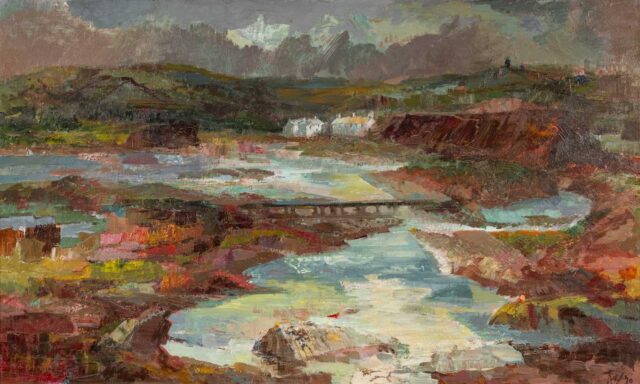
At this time Ray had five successful and influential solo exhibitions at the Leicester Galleries in London. She also designed two major mosaics in Cardiff and Edinburgh. The former, An Eye for the People, was a three-storey work on the old Western Mail building, sadly demolished in 2008 just as the Twentieth Century Society was about to list it as one of the finest post-war murals in Britain. The Edinburgh mosaic survives, a striking altarpiece in the parish church of Marchmont St Giles. Ray split with Moore in 1970 and continued to visit Marloes in Pembrokeshire until she was quite elderly. She became increasingly celebrated in Wales with major publicly-funded touring exhibitions.

Ray Howard Jones gouache 'South Haven, Scalmeye'
Lot 456 - The Autumn Welsh Sale (Part I)
£100-200
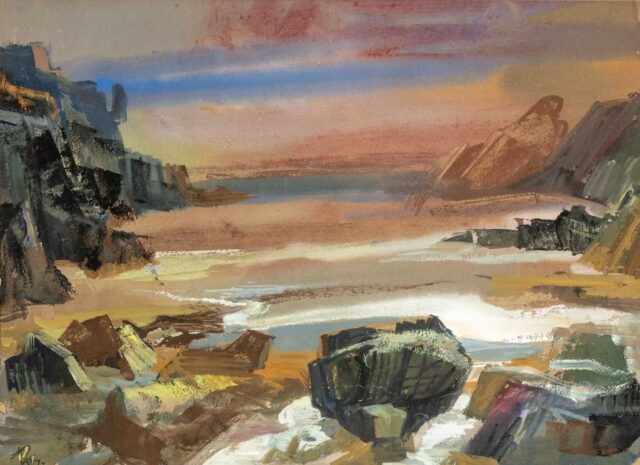
During the 1960s these works became more abstract and displayed an often dazzling variety of colours, shapes and textures derived from close observation of the coast between the Deerpark, overlooking Skomer, and Marloes Sands. Rockpools were often a source of inspiration. The majority are graphite drawings, chalks, watercolours and gouaches but there are also oils, mixed-media collages, charcoal and crayon drawings and, particularly later in life, pastels. Her rocks often have a surreal quality, being anthropomorphised and attributed names such as The Brother. She also made mumerous sketches of the wildlife including seals, woodmice, rabbits, gannets, shearwaters, hermit crabs, starfish and butterflies.
Ray's later work is often characterised by a more contrasting and vibrant use of colour and a strong sense of mysticism. Ray had a profound Christian faith and much of her work was driven by a need to bring her closer, through a deeper understanding of the natural world, to God. Her faith was reinforced by exposure to the wildness of the Pembrokeshire coast. A particular rock which she repeatedly drew was a triangular one that she named Te Deum, an abbreviation of Te Deum Laudamus, a Latin hymn in praise of God.
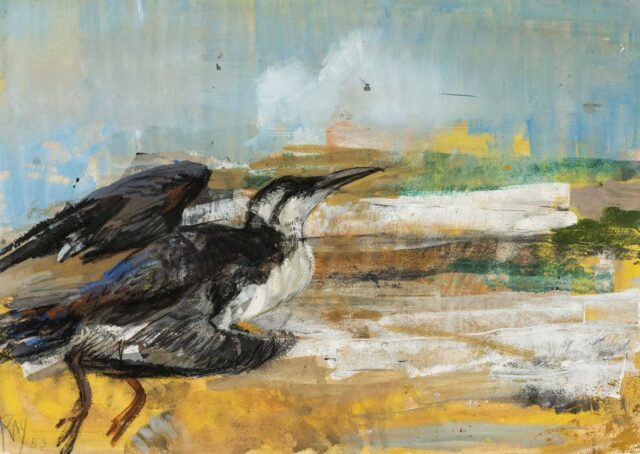
Ray's later work is often characterised by a more contrasting and vibrant use of colour and a strong sense of mysticism. Ray had a profound Christian faith and much of her work was driven by a need to bring her closer, through a deeper understanding of the natural world, to God. Her faith was reinforced by exposure to the wildness of the Pembrokeshire coast. A particular rock which she repeatedly drew was a triangular one that she named Te Deum, an abbreviation of Te Deum Laudamus, a Latin hymn in praise of God.
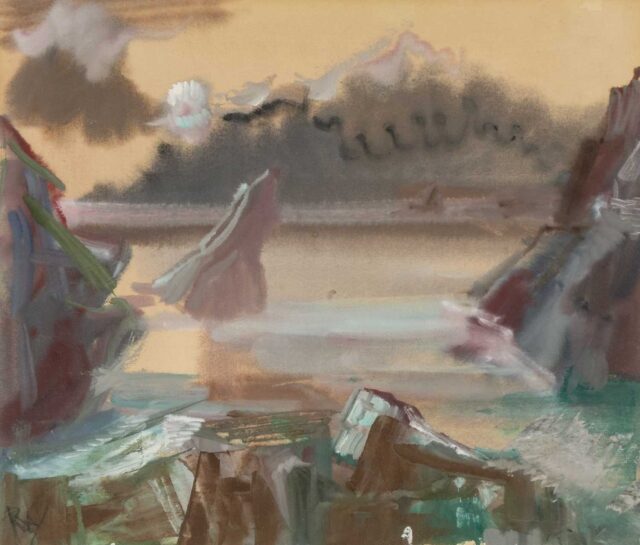
Ray also covered wider ground with studies of landscapes and historic sites in west Wales as well as on Gower and mid-Wales. London features less frequently, highlighting Ray's Welsh focus. Her travels abroad include Alderney, Tuscany, Cyprus, the United States and Portugal. She has painted portraits of her friends Professor Mary Williams and the painter-poet David Jones, as well as the Argentine pianist Alberto Portugheis.
When Ray died in 1996, after an intrepid and eventful life of ninety-three years, she left a considerable legacy of artwork. One of the largest single-artist collections of work at Amgueddfa Cymru is by Ray Howard-Jones. It comprises her bequest of around 1,800 catalogued works. The actual number of images, however, is probably at least double that due to 95 sketchbooks containing numerous pages. Ray is also well represented in the art collection of the National Library of Wales and in public collections throughout the United kingdom, notably at the Imperial War Museum.
By David Moore
David Moore worked for Pembrokeshire Museums from 1985 until 1992. He then became curator of Brecknock Museum where he built up the art collection and established the art gallery with an extensive programme of exhibitions featuring Welsh artists. Since 2004 he has worked independently writing about modern art, artist groups and public art collections in Wales. Some of this has been published under the Crooked Window imprint, www.crookedwindow.co.uk, the most recent being the 2025 Championing Artists in Wales: 25 Years of the Brecknock Art Trust. Graffeg, however, published in 2020 his Art for Wales: The Legacy of Derek Williams which explores the impact of the Derek Wiliams Trust upon the post-1900 art collection at Amgueddfa Cymru. In 2023 Bird Eye Books published his major biography, Ray Howard-Jones: My Hand is the Voice of the Sea [www.birdeyebooks.com].
The Autumn Welsh Sale (Part I) will take place on Sunday 30th November in Cardiff. View the online catalogue here.



